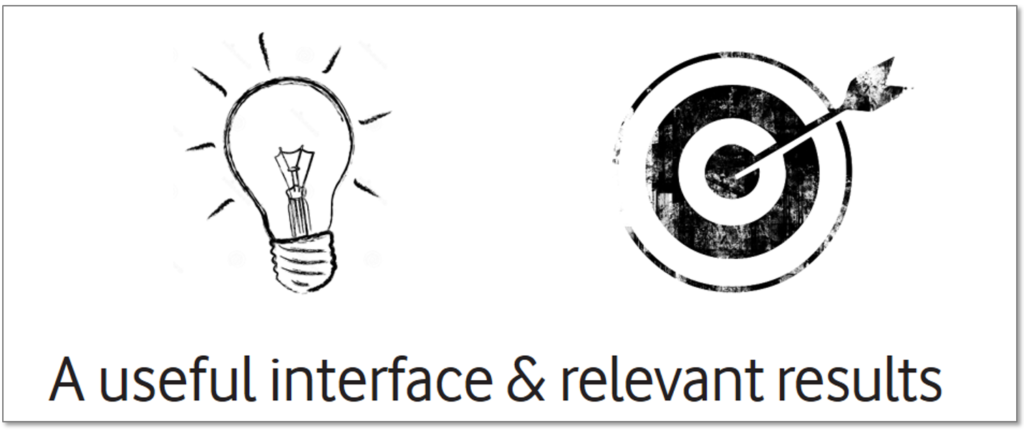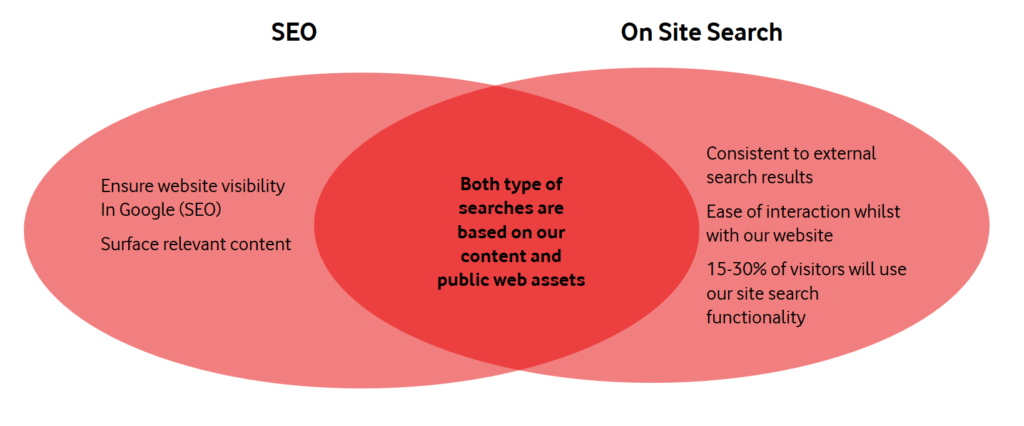Enjoy dynamic listening on the go—this podcast, AI-generated for your convenience, is perfect for driving, commuting, or waiting in line!
Hi guys! We haven’t still dig deeper on the importance of the on site search in a Findability strategy!
Just a quick post about it.
Basically, on site search is one of the pillars of Findability for several reasons:
- Search is a fundamental online behaviour: 89% of consumers use Search to find information on products or services in order to make a purchasing decision
- Site visitors are goal orientated: 73% of customers will leave the site in two minutes if they cannot find what they are searching for
- Shoppers are looking to buy: People using site search convert at two to three times the rate of those who do not
- Users are looking for Site Search: Typically, up to 30% of visitors to a website will use the site search box
- Site search provides a rich source of data: Search query data from site search can inform content creation and SEO/PPC marketing
- Site search improves CX: This is an opportunity to provide a better user experience
For users, an effective site search can be a saving grace – particularly if the site is content-heavy or has a large selection of products. This reduces pain points for our visitors and breaks down barriers that may otherwise make them bounce off our site.
Moreover, users don’t ask for much when it comes to on site search…

However, a best practice solution has to meet both these needs in order to deliver a positive User Experience. This is an undervalued task for marketers, content managers, and UX designers.

Double Diamond Model created by The British Design Council
Bear in mind, users effectively search websites within Google and other search engines, by using our brand name as a suffix/prefix to their query. These results often link through to our own site search results pages.

When a certain search term is consistently entered at a high frequency, it can be an indication that this is an item we ought to feature in our navigation menu. In this way, search and navigation are complementary to each other.
To be most effective in our on-going optimisation effort, we should align the relevance requirements of our onsite search with those required for external search, i.e. Google, Amazon, Facebook etc.
Ok, but how to evolve the on site search technology to boost the sales?
- We can look at personalisation (or contextualisation) options within site search results to increase sales and CX, i.e. knowing the user prefers Apple devices from their contract history may mean we prioritise those results.
- We can improve the semantic search, which refers the process of discovering not only keywords but also the intent and contextual meaning of a search query. Good custom search engines will factor in the intent of a query, the visitor’s previous searches, contextual relationships with other keywords, and the relative success of similar queries to infer the best results to display. Because of this, semantic search is essential for improving product findability and significantly improves the user’s search journey as well as on-site UX
- We could also create a smart site search bot, that learnt from previous search queries (machine learning). This could lead to our on site search evolving into an intelligent personal assistant to help users navigate our websites, products and services.
- Ultimately, we could connect (i.e. via-API) the on site search with a chat bot in order search to provide with answers the bot cannot find in its database. It would also allow us to setup a coherent feedback/content providing process to the consumers who visit our website.
Have a good search!
